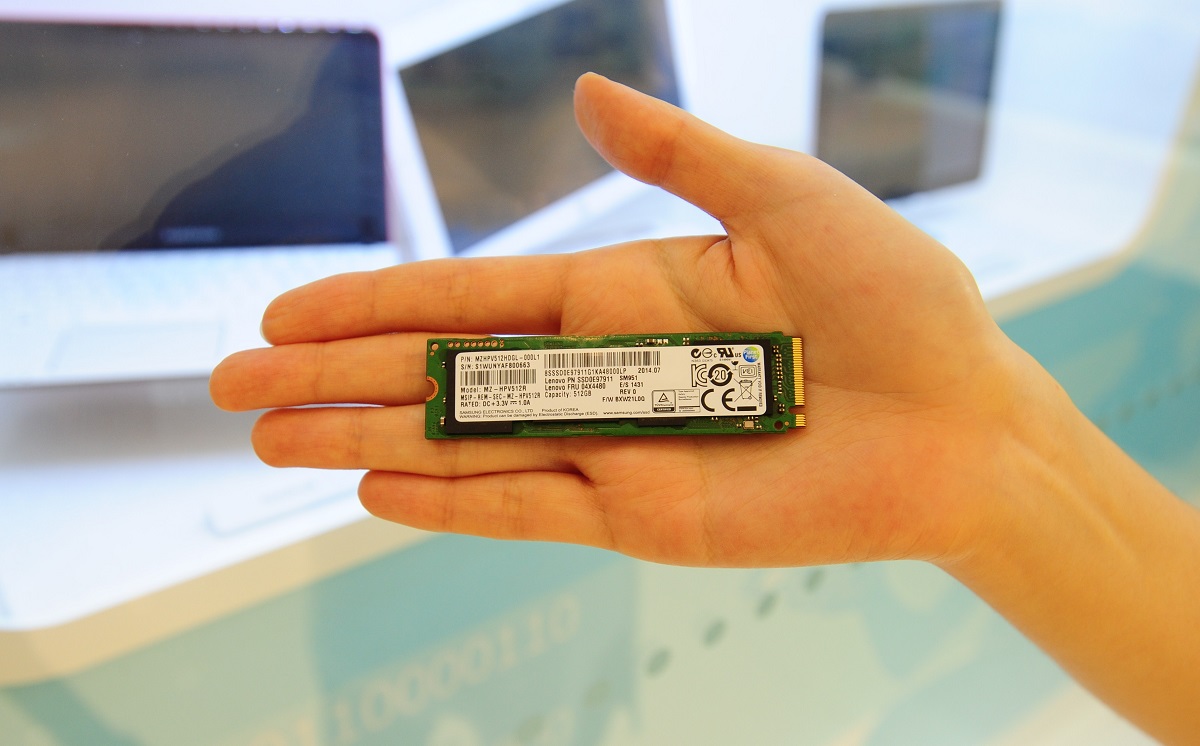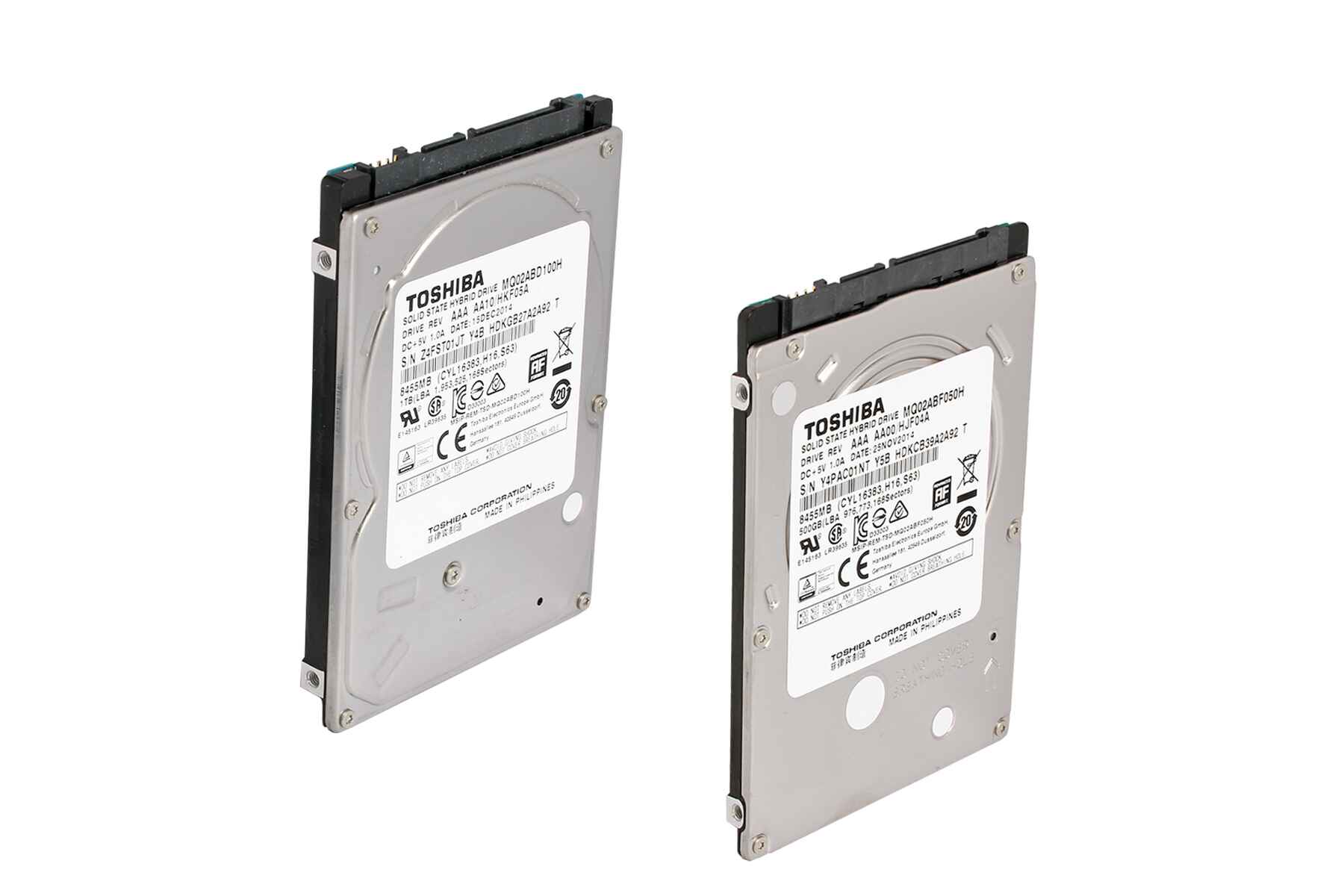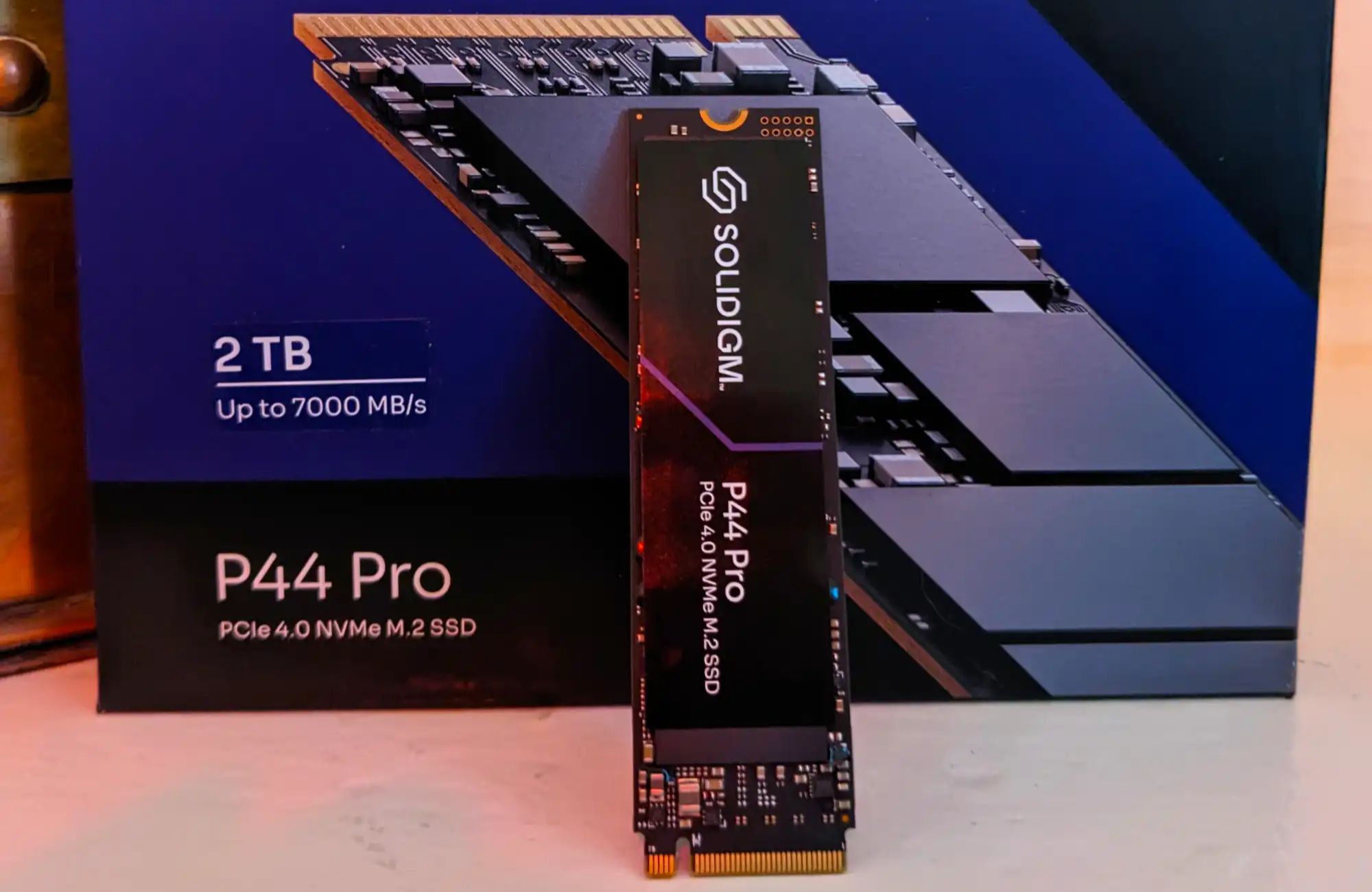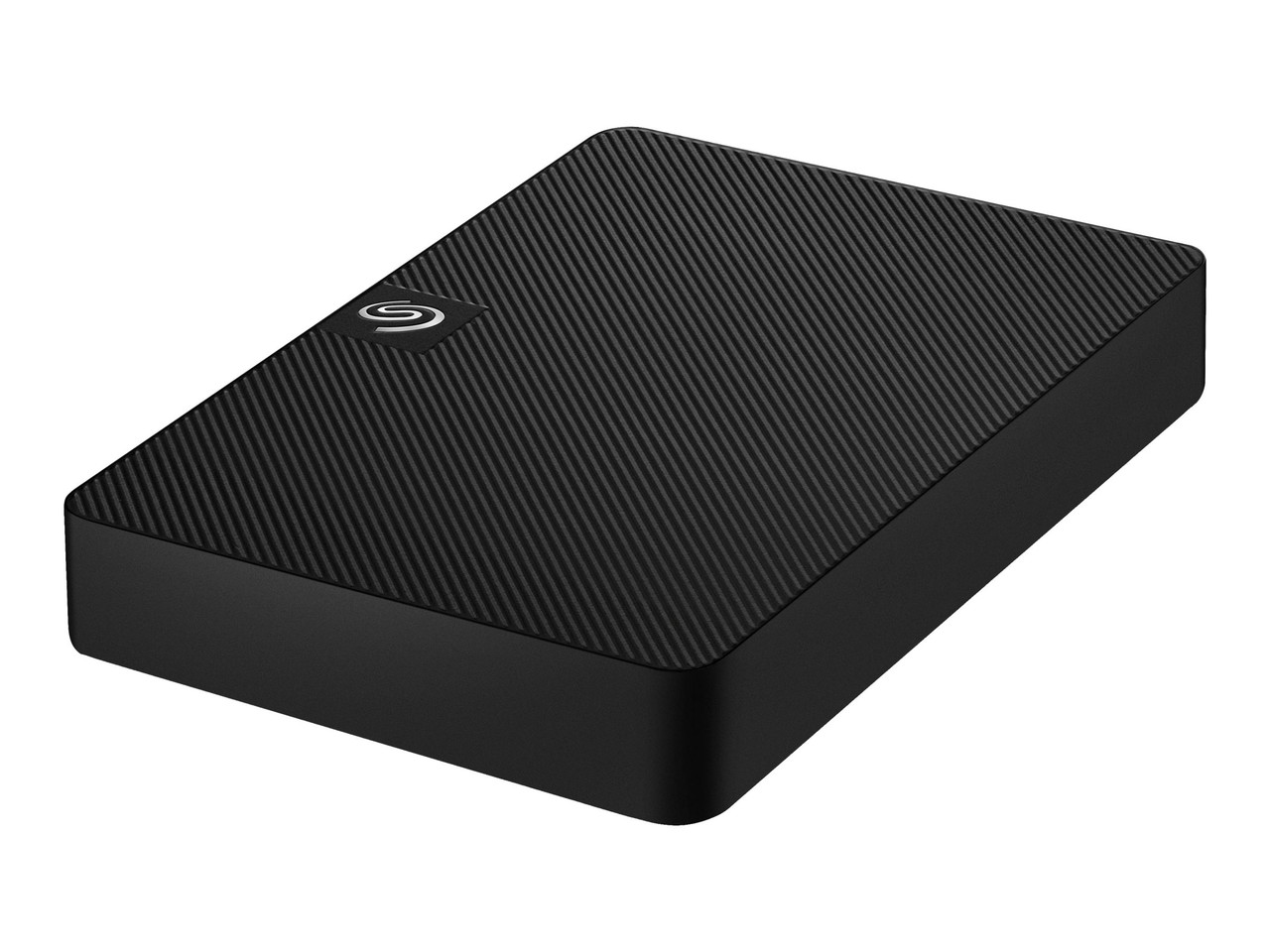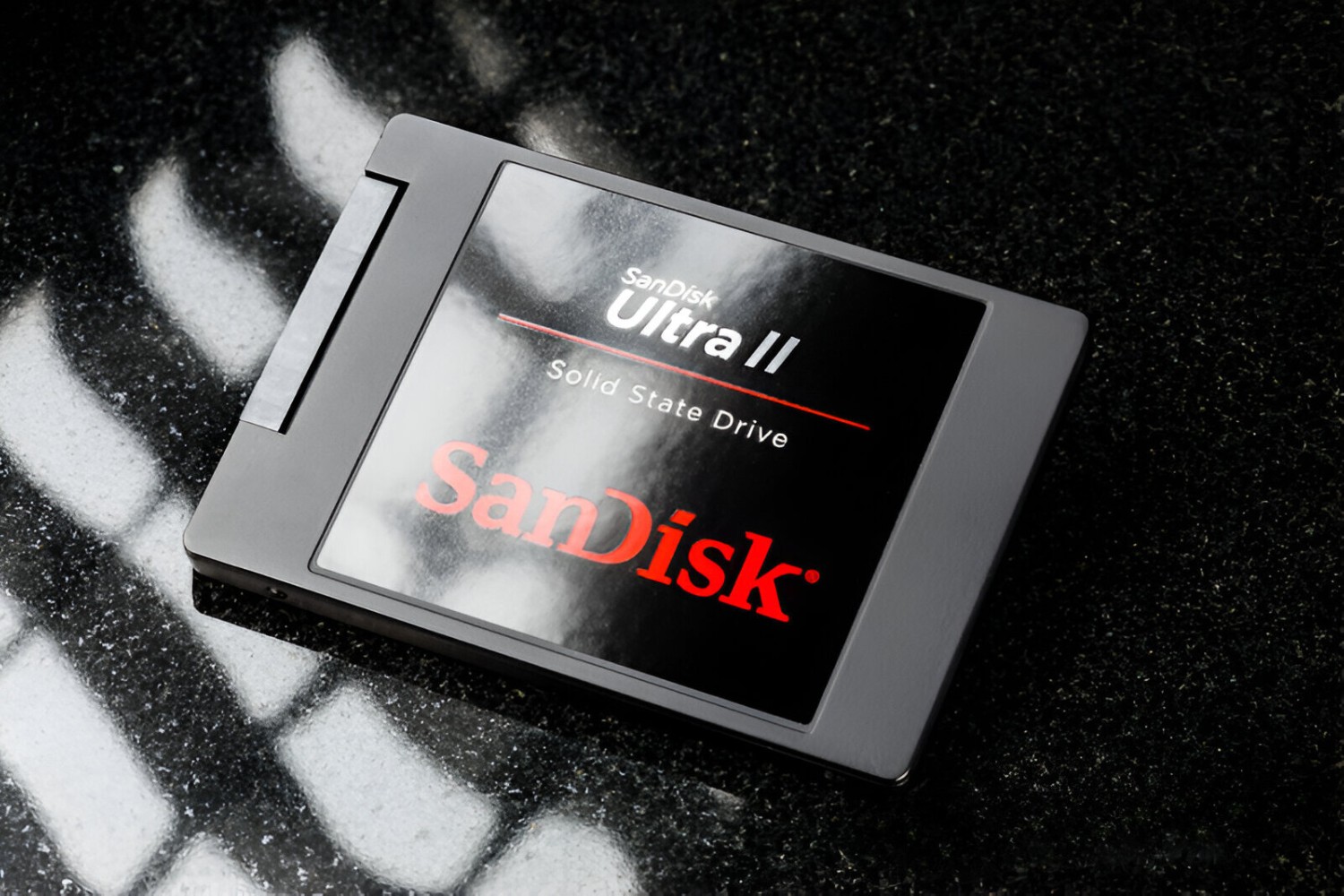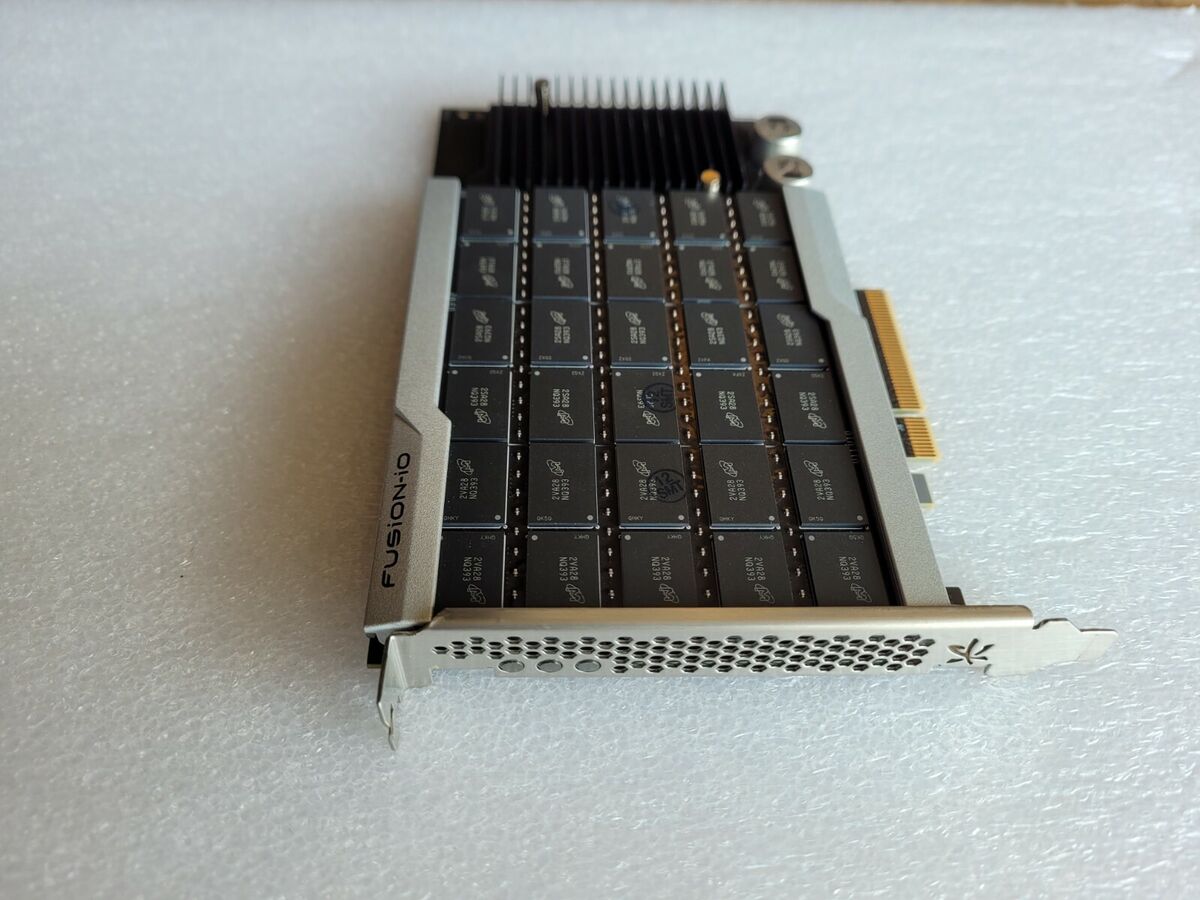Introduction
Welcome to the world of solid state drives (SSDs), the game-changers in the realm of computer storage. Gone are the days of relying solely on traditional hard disk drives (HDDs) for storing and accessing data. SSDs have revolutionized the industry with their lightning-fast speeds and enhanced performance.
In this article, we will explore the fascinating world of SSDs, shedding light on their operation, speed capabilities, and debunking common myths surrounding their performance. So, whether you’re a tech enthusiast or a curious learner, buckle up and get ready to dive into the world of SSD speed!
Before we delve into the details, let’s clarify what a solid state drive actually is. At its core, an SSD is a storage device that uses flash memory to store data. Unlike HDDs, which consist of rotating platters and read/write heads, SSDs have no moving parts. This absence of mechanical components is precisely why SSDs are renowned for their superior speed and durability.
The increased popularity of SSDs can be attributed to their numerous advantages over traditional HDDs. SSDs offer significantly faster boot times, shorter application load times, and improved overall system responsiveness. Additionally, SSDs are more resistant to physical shock and consume less power, making them an ideal choice for laptops and portable devices.
As SSD technology has evolved, the prices of these drives have become increasingly affordable, making them accessible to a wider range of consumers. With these benefits in mind, it’s no wonder that SSDs have gained immense popularity and are now widely used in both personal and professional computing environments.
In the following sections, we will explore the inner workings of SSDs, compare their speeds to their HDD counterparts, and dive into the factors that influence their speed performance. So, let’s embark on this adventure to discover just how fast a solid state drive can be!
What is a Solid State Drive (SSD)?
A solid state drive (SSD) is a type of storage device that uses integrated circuit assemblies to store and retrieve data quickly and efficiently. Unlike traditional hard disk drives (HDDs), which rely on spinning disks and mechanical components to read and write data, SSDs use NAND flash memory chips to store data in a non-volatile manner.
These NAND flash memory chips consist of memory cells that can retain data even without power. This means that SSDs have no moving parts, making them more resistant to mechanical failures and less susceptible to physical shock. This also contributes to their faster speeds and lower power consumption compared to HDDs.
SSDs come in various form factors, including 2.5-inch drives for desktops and laptops, M.2 drives, and even PCIe cards for high-performance applications. They are compatible with most modern computers and can be easily installed in existing systems with the appropriate connections.
One of the key advantages of SSDs is their incredible speed. Since there are no mechanical parts involved in the data retrieval process, an SSD can access and transfer data at lightning-fast speeds. This results in reduced boot times, faster application launches, and improved overall system responsiveness.
Another important aspect of SSDs is their durability. Unlike HDDs, which are prone to physical damage due to shock or even slight movements, SSDs can withstand more rugged usage environments. This makes them particularly popular among professionals, gamers, and anyone seeking a reliable and robust storage solution.
While the capacity of SSDs has historically been smaller compared to HDDs, advancements in technology have led to increased storage capacities at more affordable prices. Now, it is common to find SSDs with terabytes of storage, making them suitable for a wide range of applications, from personal computers to enterprise-level servers.
Overall, a solid state drive is a modern storage alternative that offers superior speed, improved durability, and increased energy efficiency when compared to traditional hard disk drives. With the continued advancements in technology, SSDs are set to become the standard storage solution, providing users with a faster and more reliable computing experience.
How does an SSD work?
To understand how a solid state drive (SSD) works, let’s take a closer look at its internal components and the process it employs to store and retrieve data.
At the heart of an SSD are NAND flash memory chips. These chips consist of cells that store data using electrically programmed and erased technology. Each cell can store multiple bits of information, typically either two or three bits per cell (known as multi-level cell or MLC and triple-level cell or TLC, respectively). The more bits that can be stored in a single cell, the higher the storage capacity of the SSD. This is why you may see SSDs with different storage capacities even if they have the same physical size.
When data is written to an SSD, it goes through a process called programming. Electrons are stored in the memory cells, with each electron representing a bit of data. To erase data from the cells, the SSD uses a process called erasure, which clears the electrons from the cells.
Unlike traditional hard disk drives (HDDs), where data is written in sequential locations on spinning disks, SSDs employ a technique called wear leveling. Wear leveling ensures that data is written to different memory cells across the SSD evenly. This helps prevent certain cells from wearing out faster than others, which can lead to decreased performance or premature failure.
When the computer needs to access data from an SSD, a controller chip located on the SSD manages the process. This controller chip acts as the brain of the SSD, overseeing data transfers and managing the read and write operations. The controller chip communicates with the computer through interfaces such as SATA (Serial ATA), NVMe (Non-Volatile Memory Express), or PCIe (Peripheral Component Interconnect Express), allowing for high-speed data transfer between the SSD and other hardware components.
SSDs also utilize cache memory to enhance performance. This cache memory serves as a buffer between the computer and the storage cells. It stores frequently accessed data, allowing for faster read and write operations. The size of the cache memory can vary among SSD models and can greatly impact the overall performance of the drive.
In summary, an SSD works by using NAND flash memory chips to store data electronically. The controller chip manages the operation of the SSD, including data transfers, wear leveling, and cache management. The absence of moving parts in an SSD makes it more reliable, faster, and more durable than traditional hard disk drives.
Speed comparison: SSD vs. Hard Disk Drive (HDD)
When it comes to speed, solid state drives (SSDs) are in a league of their own compared to traditional hard disk drives (HDDs). Let’s explore the key differences in speed between these two storage technologies.
HDDs rely on spinning platters and read/write heads to access and store data. The time it takes for the platters to spin and the heads to physically move to the correct position results in relatively slower speeds compared to SSDs. HDDs typically have a rotational speed measured in RPM (revolutions per minute), with common speeds ranging from 5,400 RPM to 7,200 RPM for consumer-grade drives.
On the other hand, SSDs have no moving parts and use flash memory to store and retrieve data. As a result, the access times for SSDs are significantly faster compared to HDDs. This translates into quicker boot times, faster application launches, and reduced file transfer times.
One of the most noticeable speed differences between SSDs and HDDs is their read and write speeds. SSDs excel in both sequential and random read/write operations. Sequential read/write speeds refer to the uninterrupted transfer of data in large chunks, while random read/write speeds focus on accessing and manipulating small, scattered pieces of data.
SSDs outperform HDDs in sequential read/write speeds, allowing for faster transfer of large files, such as video footage or game installations. This makes SSDs particularly attractive for multimedia professionals and gamers who need to work with large file sizes.
Where SSDs truly shine is in random read/write speeds. Accessing small and scattered data across the drive is much faster with an SSD, resulting in more responsive system performance. This means that tasks like opening multiple applications, multitasking, and launching files become almost instantaneous with an SSD.
It is worth noting that while SSDs generally have higher speeds than HDDs, the actual speed can vary depending on the specific model, technology, and interface used. Newer SSDs utilizing NVMe (Non-Volatile Memory Express) or PCIe (Peripheral Component Interconnect Express) interfaces offer even greater speed improvements compared to traditional SATA-based SSDs.
In summary, SSDs outperform HDDs in terms of speed due to their lack of moving parts and utilization of flash memory. SSDs offer faster boot times, quicker application launches, and reduced file transfer times. Their superior performance in both sequential and random read/write speeds makes them the ideal choice for users who crave speed and responsiveness in their computing experience.
Factors affecting SSD speed
While solid state drives (SSDs) are known for their fast speeds, several factors can impact their overall performance. Let’s explore some key factors that influence the speed of an SSD.
1. Interface: The interface through which the SSD connects to the computer plays a crucial role in determining its speed. Older SATA (Serial ATA) interfaces offer lower speeds compared to newer interfaces like NVMe (Non-Volatile Memory Express) and PCIe (Peripheral Component Interconnect Express), which provide higher bandwidth and faster data transfer rates.
2. Controller: The SSD’s controller chip is responsible for managing data transfers, wear leveling, and other important operations. A high-quality controller with advanced features can significantly enhance the performance of an SSD. SSDs from reputable manufacturers often come with optimized controllers to maximize speed and reliability.
3. NAND Flash Type: There are different types of NAND flash memory, such as Single-Level Cell (SLC), Multi-Level Cell (MLC), and Triple-Level Cell (TLC). SLC offers the fastest speeds but comes at a higher cost and lower storage capacity. MLC and TLC have lower speeds but offer higher storage capacities at more affordable prices. The type of NAND flash used in an SSD can impact its overall speed.
4. Cache: SSDs often include a cache memory, which acts as a temporary storage buffer for frequently accessed data. The size and speed of the cache can have a significant impact on overall SSD performance, especially when handling small and random reads and writes.
5. Capacity: The overall capacity of an SSD can influence its speed. Generally, larger capacity SSDs have faster speeds than their smaller capacity counterparts. This is due to the way data is distributed across the memory cells, as larger drives often have more parallel channels for data transfer.
6. Usage and Fragmentation: Over time, as an SSD fills up with data, its speed can be affected. SSDs can experience a decrease in performance if they are close to full capacity. Additionally, frequent file deletions and modifications can lead to data fragmentation, which can impact read and write speeds. Periodic optimization and TRIM commands can help mitigate these effects.
7. Temperature: Like any electronic device, SSDs can be affected by high temperatures. When SSDs operate under excessive heat conditions, they may lower their performance or even throttle to prevent damage. Proper cooling and airflow are crucial to maintaining optimal SSD speed and longevity.
It’s important to note that while these factors can impact the speed of an SSD, even an entry-level SSD still offers significantly faster speeds compared to traditional hard disk drives (HDDs). When considering an SSD, it’s essential to find a balance between speed, capacity, and price that suits your specific needs and budget.
Sequential vs. Random read/write speeds
When discussing solid state drive (SSD) speed, it’s essential to understand the distinction between sequential and random read/write speeds. These two types of operations determine how efficiently an SSD can access and manipulate data.
Sequential Read/Write Speeds:
Sequential read and write speeds refer to the continuous transfer of large chunks of data. This type of operation typically occurs when transferring large files or performing tasks that involve sequential access patterns, such as video editing or data backups.
An SSD’s sequential read speed represents how quickly it can retrieve data in the order it is stored on the drive. This is measured in megabytes per second (MB/s). Higher sequential read speeds allow for faster data transfers, resulting in quicker file access and reduced waiting times.
Sequential write speed, on the other hand, represents how fast an SSD can write data in a continuous manner. Similar to the read speed, this is measured in megabytes per second (MB/s). A higher sequential write speed enables faster file transfers and faster data storage, making it ideal for tasks that involve large file sizes.
Random Read/Write Speeds:
Random read and write speeds, also known as Input/Output Operations Per Second (IOPS), refer to the SSD’s ability to access and manipulate small, scattered pieces of data randomly across the storage cells. This type of operation is essential for tasks that involve accessing various files simultaneously, such as multitasking, launching applications, or accessing databases.
Random read speed, measured in IOPS, represents how quickly an SSD can retrieve small pieces of data. This speed is important for tasks that require fast access to multiple files, such as opening multiple applications or quickly navigating through a large directory of files.
Random write speed, also measured in IOPS, represents how fast an SSD can write small chunks of data. This speed is crucial for tasks that involve frequent file modifications, such as saving changes to documents, editing images, or running databases.
Random read/write speeds are particularly important for improving system responsiveness and reducing latency. A higher random read/write speed means that the SSD can handle multiple small operations simultaneously, resulting in a smoother and more efficient user experience.
It’s important to note that the sequential and random read/write speeds of an SSD can vary depending on the specific model, technology, and interface used. Some SSDs may excel in sequential speeds, while others may have faster random speeds or strike a balance between the two. Understanding these distinctions will help you choose the right SSD for your specific needs, whether it’s fast sequential speeds for large file transfers or quick random speeds for multitasking and responsiveness.
Understanding SSD speed measurements: IOPS and MB/s
When evaluating the speed of solid state drives (SSDs), two common measurements are used: IOPS and MB/s. These measurements help provide insights into how quickly an SSD can perform read and write operations. Let’s delve into the meaning of these measurements and how they contribute to understanding SSD speed.
IOPS (Input/Output Operations Per Second):
IOPS refers to the number of input/output operations that an SSD can perform in one second. It measures the speed at which the SSD can handle small, random read and write operations. Higher IOPS indicate faster performance for tasks that involve accessing multiple small files simultaneously.
IOPS is commonly used as a metric to assess SSD performance in scenarios such as database operations, virtualization, and multi-threaded applications. It quantifies the SSD’s ability to handle a large number of random read/write requests, which can greatly impact overall system responsiveness.
MB/s (Megabytes per second):
MB/s measures the data transfer rate of an SSD in terms of megabytes per second. It is primarily used to evaluate the sequential read and write speeds of an SSD. Sequential read speed refers to how quickly the SSD can read large blocks of data, while sequential write speed represents how fast it can write data in a continuous manner.
MB/s is commonly used for tasks that involve transferring large files, such as video editing, data backups, or file transfers. It provides an indication of how efficiently the SSD can handle data-intensive operations that require sustained data throughput.
It’s important to note that IOPS and MB/s are not directly comparable measurements. They represent different aspects of SSD performance and are relevant in different scenarios. While high sequential read and write speeds (measured in MB/s) are beneficial for tasks involving large files, high IOPS are crucial for operations that require fast access to small files or distributed data.
When considering an SSD, it’s important to assess both IOPS and MB/s based on your specific requirements. If your usage involves tasks that require frequent small file access, focusing on IOPS is essential. On the other hand, if you often deal with large file transfers or media-intensive workflows, paying attention to high sequential read and write speeds (measured in MB/s) is more important.
Manufacturers often provide both IOPS and MB/s specifications for their SSD models, enabling users to compare and select the most suitable SSD that aligns with their specific needs.
Common SSD speed myths debunked
With the increasing popularity of solid state drives (SSDs), there are several misconceptions surrounding their speed and performance. Let’s debunk some of the common myths associated with SSD speed to provide a clearer understanding of their capabilities.
Myth 1: SSD speed degrades over time:
Contrary to popular belief, the speed of an SSD does not degrade over time. Unlike traditional hard disk drives (HDDs) that can experience performance issues due to fragmentation or mechanical wear, SSDs maintain their speed consistently throughout their lifespan. However, as an SSD fills up with data, its performance may be affected if it reaches near-full capacity.
Myth 2: SSD speed is only relevant for boot times:
While SSDs do significantly improve boot times, their speed benefits extend far beyond that. SSDs offer faster application launches, quicker file transfers, and enhanced overall system responsiveness. Tasks like opening programs, multitasking, and accessing data become faster and more efficient with an SSD.
Myth 3: You won’t notice SSD speed if your computer is slow:
Even if your computer is not the latest or most powerful, upgrading to an SSD can still make a noticeable difference in speed. The fast read and write speeds of an SSD can compensate for other hardware limitations and provide a smoother and more responsive user experience.
Myth 4: SSD speed is the same for all models:
All SSDs are not created equal. Factors such as the SSD’s controller, NAND flash technology, cache memory, and interface can vary among different models. These factors all contribute to differences in speed and performance. Therefore, comparing specifications and choosing a high-quality SSD from a reputable manufacturer can ensure optimal speed and reliability.
Myth 5: Faster IOPS means faster real-world performance:
While IOPS is an important metric to evaluate SSD performance, it is not the sole indicator of real-world speed. IOPS primarily measures the SSD’s ability to handle small, random read and write operations. Real-world performance also depends on factors such as sequential read/write speeds, cache size, controller efficiency, and the specific tasks being performed. Therefore, a holistic assessment of an SSD’s specifications is crucial for determining its actual performance.
Myth 6: SSDs are not worth the cost for everyday users:
As SSD prices continue to decline, they have become much more affordable for everyday users. The speed and performance benefits of an SSD can enhance everyday computing tasks, improve productivity, and provide a more enjoyable user experience. The increased durability and energy efficiency of SSDs also contribute to their value in the long run.
By debunking these myths, it’s clear that SSDs offer significant speed advantages over traditional HDDs and can significantly enhance computing experiences for users across a wide range of applications and usage scenarios.
Real-world examples of SSD speed
SSDs are known for their speed and can deliver impressive performance in real-world scenarios. Let’s explore some examples of how SSD speed manifests in various applications and use cases.
1. Faster boot times:
One of the most noticeable benefits of SSD speed is evident in faster boot times. When using an SSD, the operating system loads quickly, allowing you to start using your computer almost instantly. This time-saving feature is particularly beneficial for those who frequently turn their computers on and off or need to quickly access their devices for work or entertainment purposes.
2. Quicker application launches:
Opening applications with an SSD is noticeably faster compared to traditional hard disk drives (HDDs). Whether it’s launching resource-intensive software like video editors or simply opening everyday programs like web browsers or word processors, SSDs dramatically reduce application load times, allowing you to launch and use them almost instantaneously.
3. Improved gaming performance:
Gamers can experience significant benefits from SSD speed. Games installed on an SSD load faster, reducing the waiting time and getting you into the action quickly. Additionally, SSDs can provide improved in-game performance due to faster data access, resulting in smoother gameplay, reduced stuttering, and shorter loading screens.
4. Enhanced productivity:
For professionals and productivity-focused users, SSD speed can significantly improve daily tasks. Opening and switching between multiple applications becomes almost seamless, allowing for a more efficient workflow. Tasks involving file transfers, such as copying large files or backing up data, are completed in a fraction of the time. This increased productivity can have a positive impact on work efficiency and overall user satisfaction.
5. Quick file access:
Locating and accessing files stored on an SSD is noticeably faster than on an HDD. Searches for specific files or navigating through folders with numerous files are virtually instantaneous. This speed advantage is particularly beneficial for users who work with large volumes of data or frequently access and modify files during their daily tasks.
6. Snappy system responsiveness:
Perhaps the most significant real-world impact of SSD speed is the overall system responsiveness. With an SSD, tasks such as opening, closing, and switching between windows are incredibly smooth. User interactions like clicking, scrolling, and typing feel more responsive and instantaneous, resulting in a more satisfying and enjoyable computing experience.
These real-world examples highlight how SSD speed makes a tangible difference in various aspects of computing. From faster boot times and application launches to improved gaming performance and enhanced productivity, SSDs offer a significant upgrade in speed that can positively impact everyday tasks and user satisfaction.
Conclusion
Solid state drives (SSDs) have revolutionized the storage industry with their exceptional speed and performance. By utilizing flash memory and eliminating moving parts, SSDs offer faster boot times, quicker application launches, enhanced productivity, and a more responsive computing experience.
Throughout this article, we have explored the inner workings of SSDs, debunked common myths surrounding their speed, and examined the factors that influence their performance. We have also discussed the distinction between sequential and random read/write speeds, and delved into the importance of understanding speed measurements like IOPS and MB/s.
In real-world scenarios, SSD speed manifests in faster boot times, quicker application launches, improved gaming performance, enhanced productivity, and overall system responsiveness. The benefits of SSD speed extend to a wide range of users, from everyday computer users to professionals working with resource-intensive applications.
As SSD technology continues to advance, the prices of these drives are becoming increasingly affordable, making them more accessible to a broader range of consumers. With their durability, low power consumption, and fast speeds, SSDs have become the standard choice for storage solutions in both personal and professional computing environments.
When evaluating SSDs, it is vital to consider factors such as the interface, controller, NAND flash type, cache, capacity, and real-world performance. These factors can have a significant impact on the speed and overall capabilities of an SSD.
In conclusion, SSDs have transformed the storage landscape, providing users with unparalleled speed, improved reliability, and a smoother computing experience. Whether you’re looking to upgrade your personal computer or searching for high-performance storage solutions for your professional needs, SSDs remain the go-to choice for speed enthusiasts and those seeking optimal performance.







